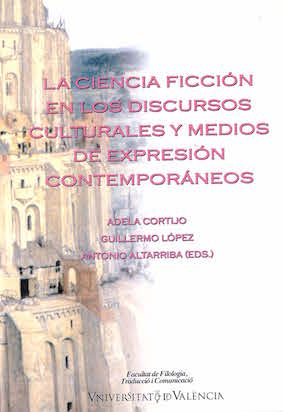Sexo artificial, ficciones hipermodernas y otros vacíos: Los amantes de silicona, de Javier Tomeo
DOI:
https://doi.org/10.7203/qf-elit.v14i0.4022Paraules clau:
narrativa hispànica, ciència ficció, pornografia, hipermodernitat, tecnologia Resum
Resum
A partir del motiu del cos artificial en la narrativa de ciència ficció i en el relat pornogràfic s'analitza el joc extrem de ficcions que s'opera en Els amants de silicona (2008). A diferència de la literatura de fi de segle fascinada pel poder de l'artifici enfront de la naturalesa, aquesta novel·la és una bona mostra de la cultura hiperreal fetillada per la “falsedat autèntica”, una cultura marcada pels nous canvis tecnològics i que la seva lògica d'embranzida al gaudi acaba instrumentalitzant al cos en un plaer solitari i anul·lant la dimensió del desig, el sentiment amorós o el llaç social.
 Descàrregues
Descàrregues
Descàrregues
Com citar
-
Resum274
-
PDF (Español)527
Número
Secció
Llicència
 Este obra está bajo una licencia de Creative Commons Reconocimiento-NoComercial-SinObraDerivada 4.0 Internacional.
Este obra está bajo una licencia de Creative Commons Reconocimiento-NoComercial-SinObraDerivada 4.0 Internacional.
Tots els documents inclosos a OJS són d'accés lliure i propietat dels seus autors i/o institucions editores, i per tant, qualsevol acte de reproducció, comercialització, comunicació pública o transformació total o parcial necessita el consentiment exprés i escrit d'aquests.
________
Authors who publish with this journal agree to the following terms:
- Authors retain copyright and grant the journal right of first publication with the work simultaneously licensed under a Creative Commons Attribution License that allows others to share the work with an acknowledgement of the work's authorship and initial publication in this journal.
- Authors are able to enter into separate, additional contractual arrangements for the non-exclusive distribution of the journal's published version of the work (e.g., post it to an institutional repository or publish it in a book), with an acknowledgement of its initial publication in this journal.
- Authors are permitted and encouraged to post their work online (e.g., in institutional repositories or on their website) prior to and during the submission process, as it can lead to productive exchanges, as well as earlier and greater citation of published work (See The Effect of Open Access).



